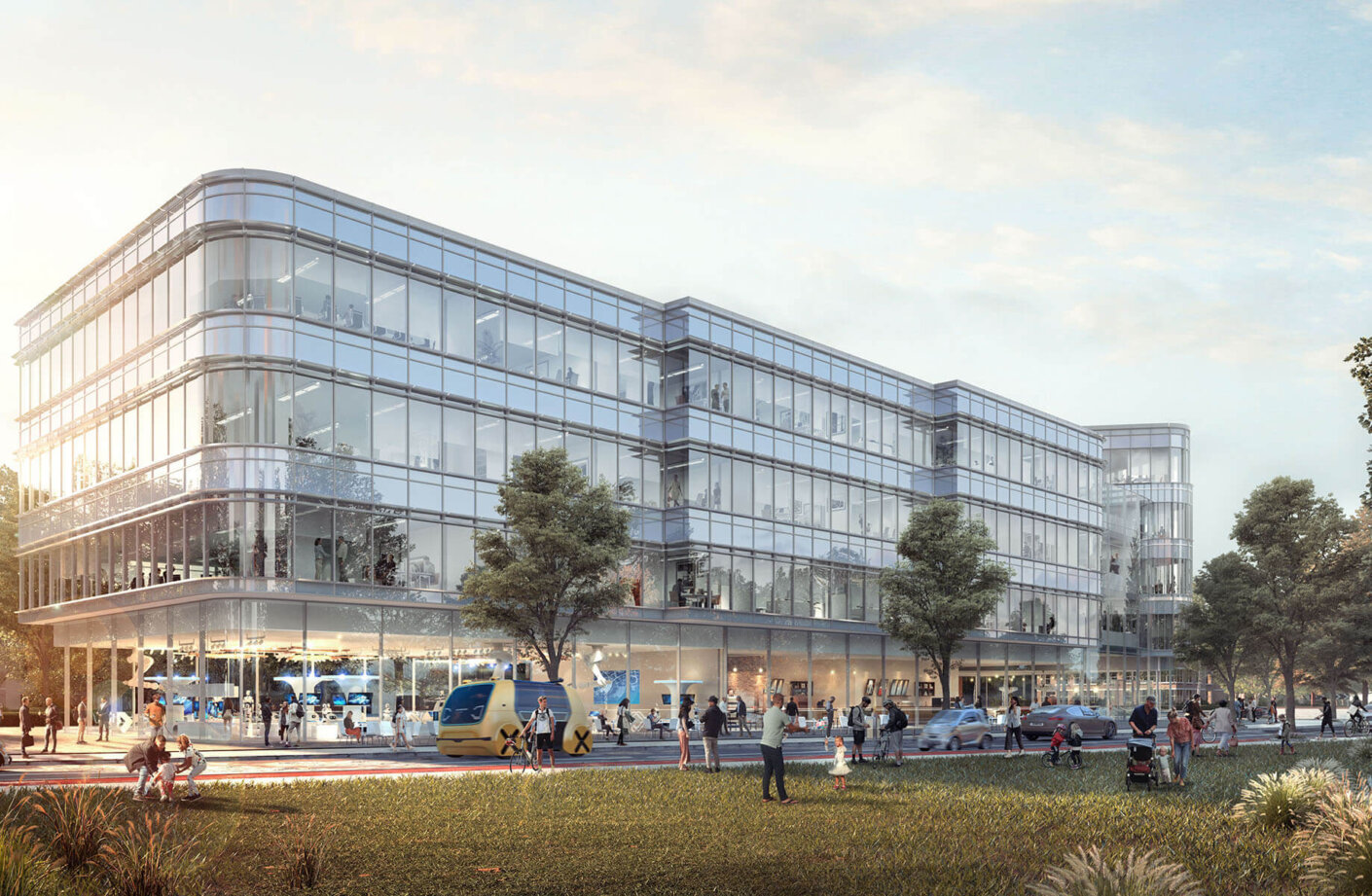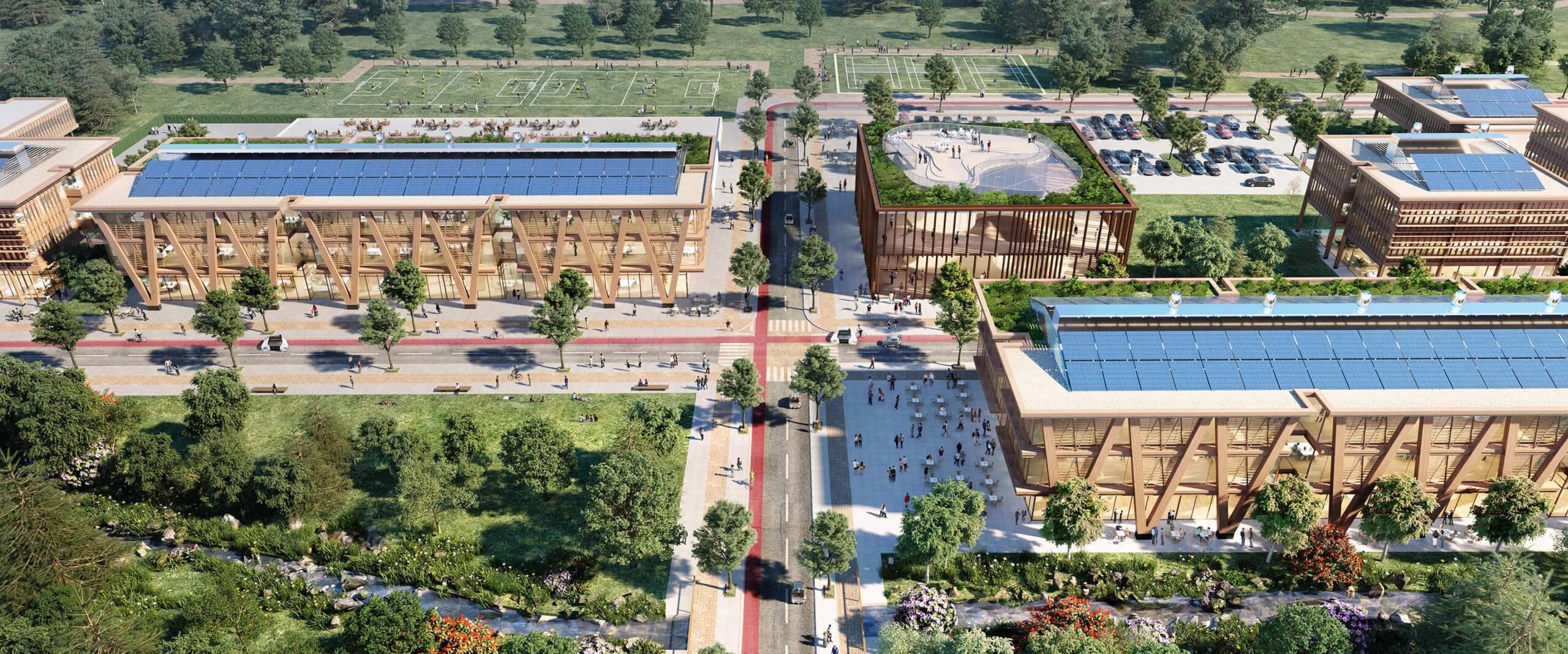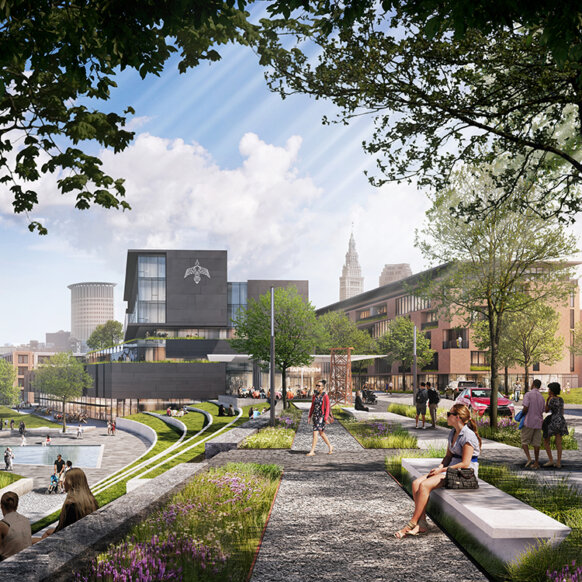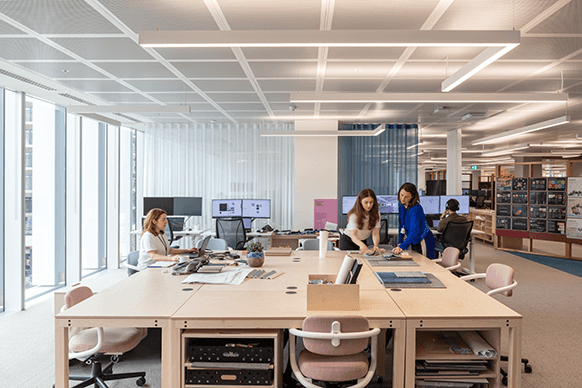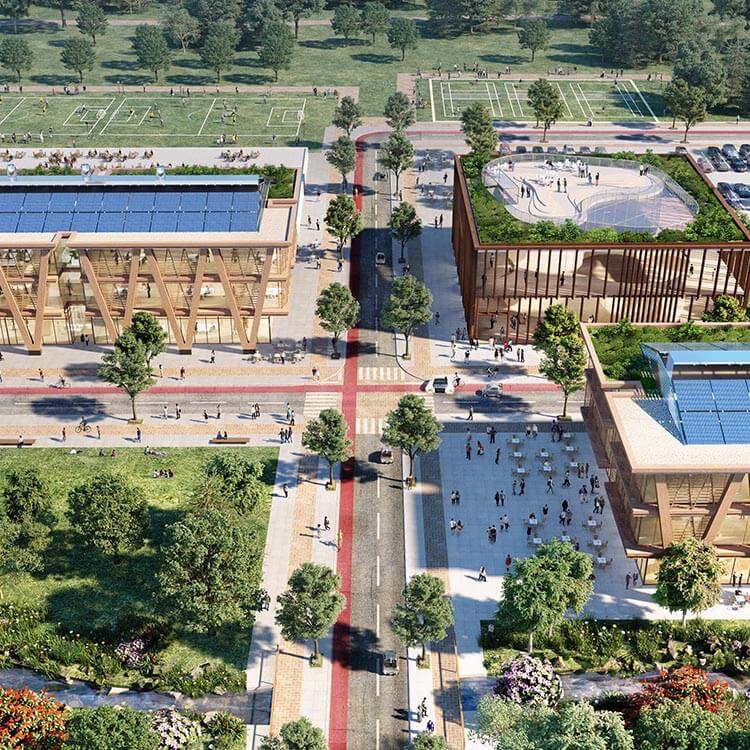
Milton Park Vision 2040 Masterplan
Milton Park in Oxfordshire is a place of true transformation. From army storage depot to next-generation tech hub, the Park has seen significant change that shows no signs of stopping.
Over 250 fast-growing tech businesses are already based at Milton Park employing 9,000 of the region’s top tech talent. By 2040 the client hopes Milton Park will have a working population reaching 20,000 people.
Our masterplan will take Milton Park through this change, developing it into a more walkable, neighbourhood-style campus with clear gateways, adaptable space and improved mobility choices. High-quality amenities will encourage people to use shared outside space, while brand-new laboratory space will attract the best up-and-coming businesses and talent.
Designed to accommodate changes in the most rapidly evolving industries, the flexible masterplan framework will elevate Milton Park as the leader of the new knowledge economy, supporting the visionary entrepreneurs in the area for many years to come.

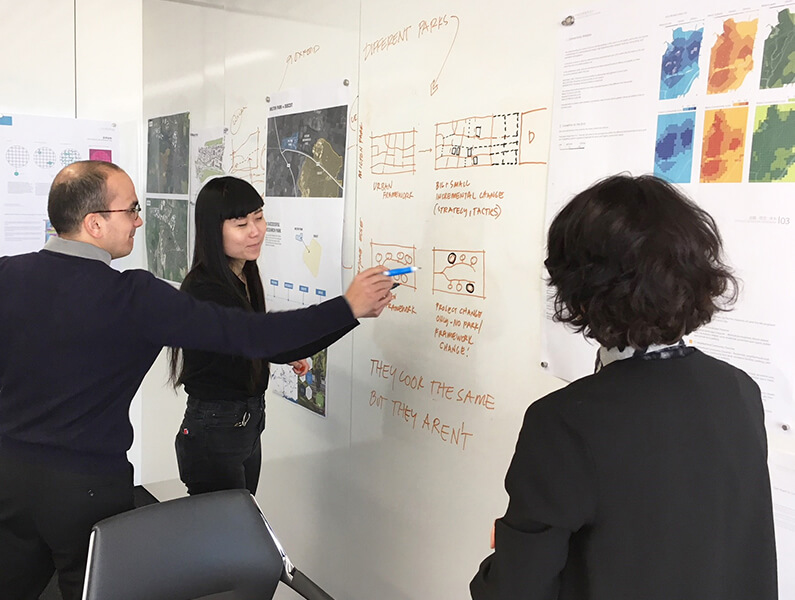
Our masterplan was designed with a clear process and purpose in mind. We adopted a broad lens of evaluating data and incorporating the stakeholder’s own rigorous and analytical interests from their science backgrounds. We formulated a process with the client that pulled the strands of analysis, survey responses, and one-on-one detailed interviews through the insightful lens of the Advisory Group to challenge and validate the emerging Vision.
We undertook a detailed analysis to explore higher education and businesses in the Oxfordshire area to understand future space needs. A connectivity and character analysis helped us gain insight into the current physical condition of Milton Park. This research has been conducted at four different scales: from the regional area comprising the Southeast of England, to 10 miles and 5 miles radius around Milton Park and the ownership of Milton Park itself.
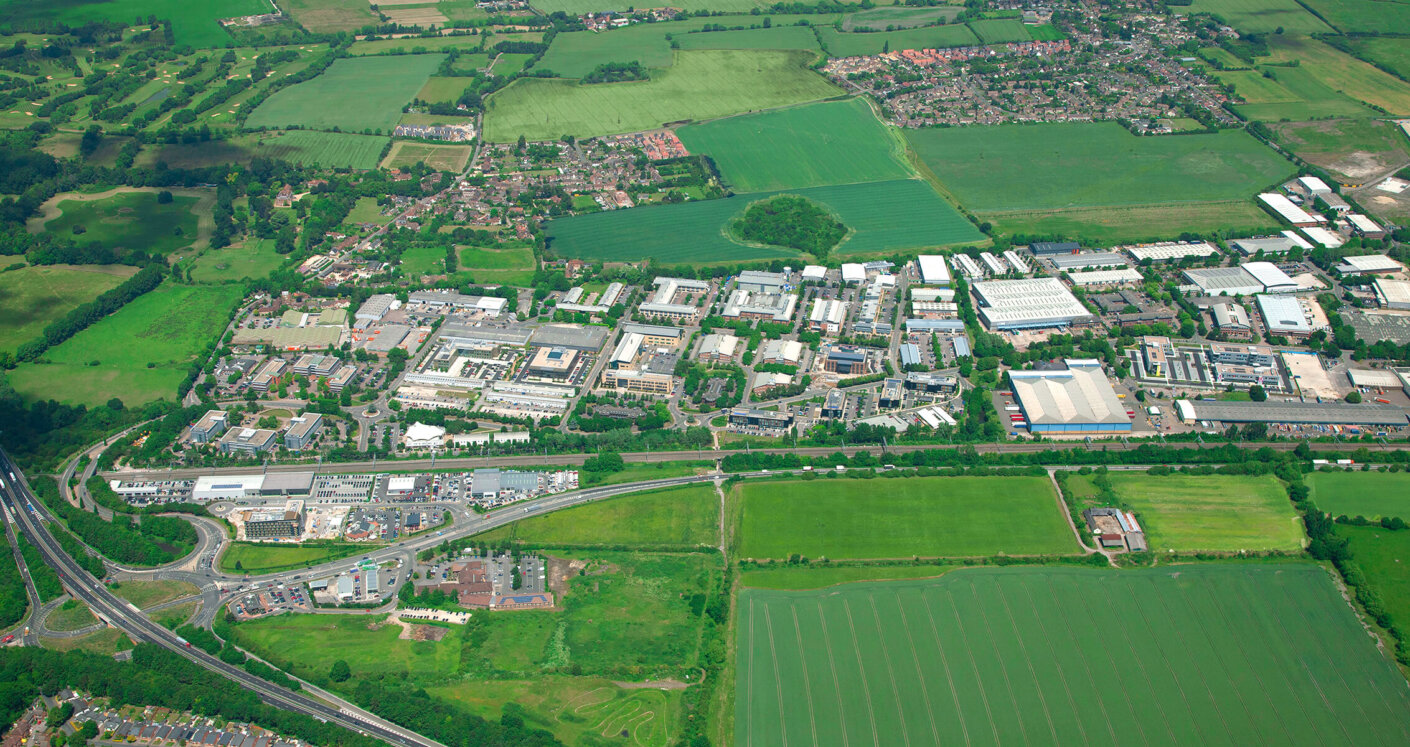
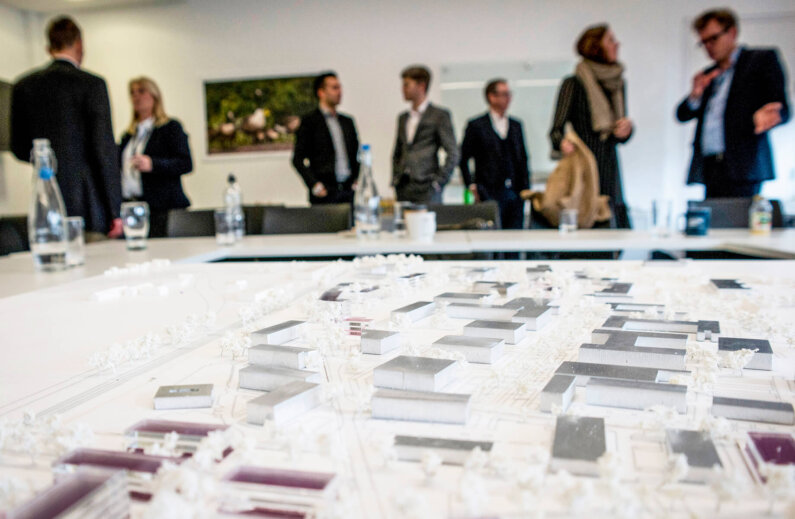
The Advisory Group and open surveys were central to the design process. We recognised that Oxfordshire is home to many exceptionally bright and creative individuals and to not draw from this pool would be to miss a major opportunity. Over 1,100 people were surveyed in the Vision 2040 survey and more than 1,900 were surveyed in the mobility survey.
The Vision 2040 plan grows Milton Park and Oxfordshire as a research destination by truly understanding and catering for young fast-growing companies, giving them space to grow while providing flexible leases and access to networks of existing high performing companies.
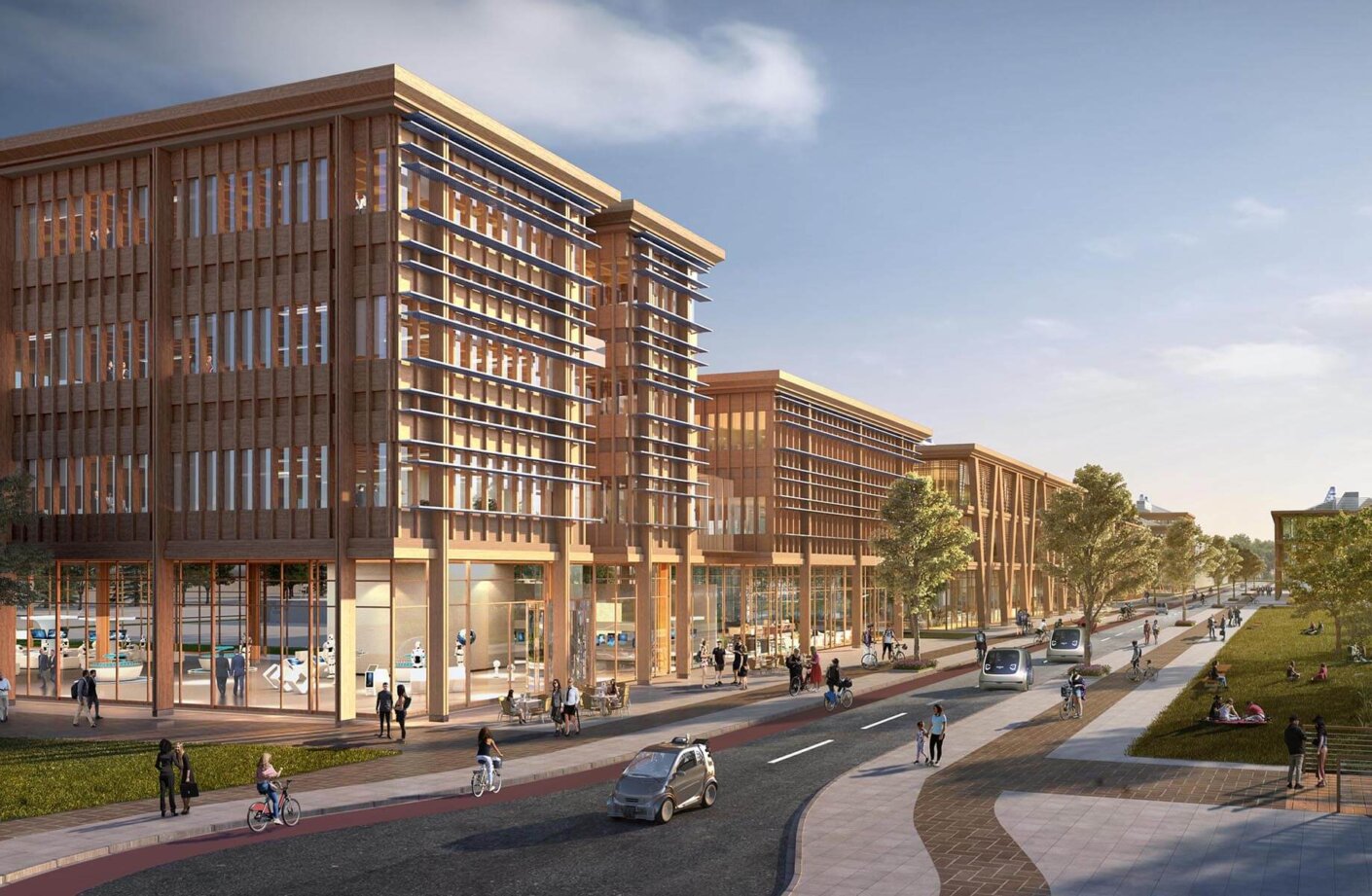
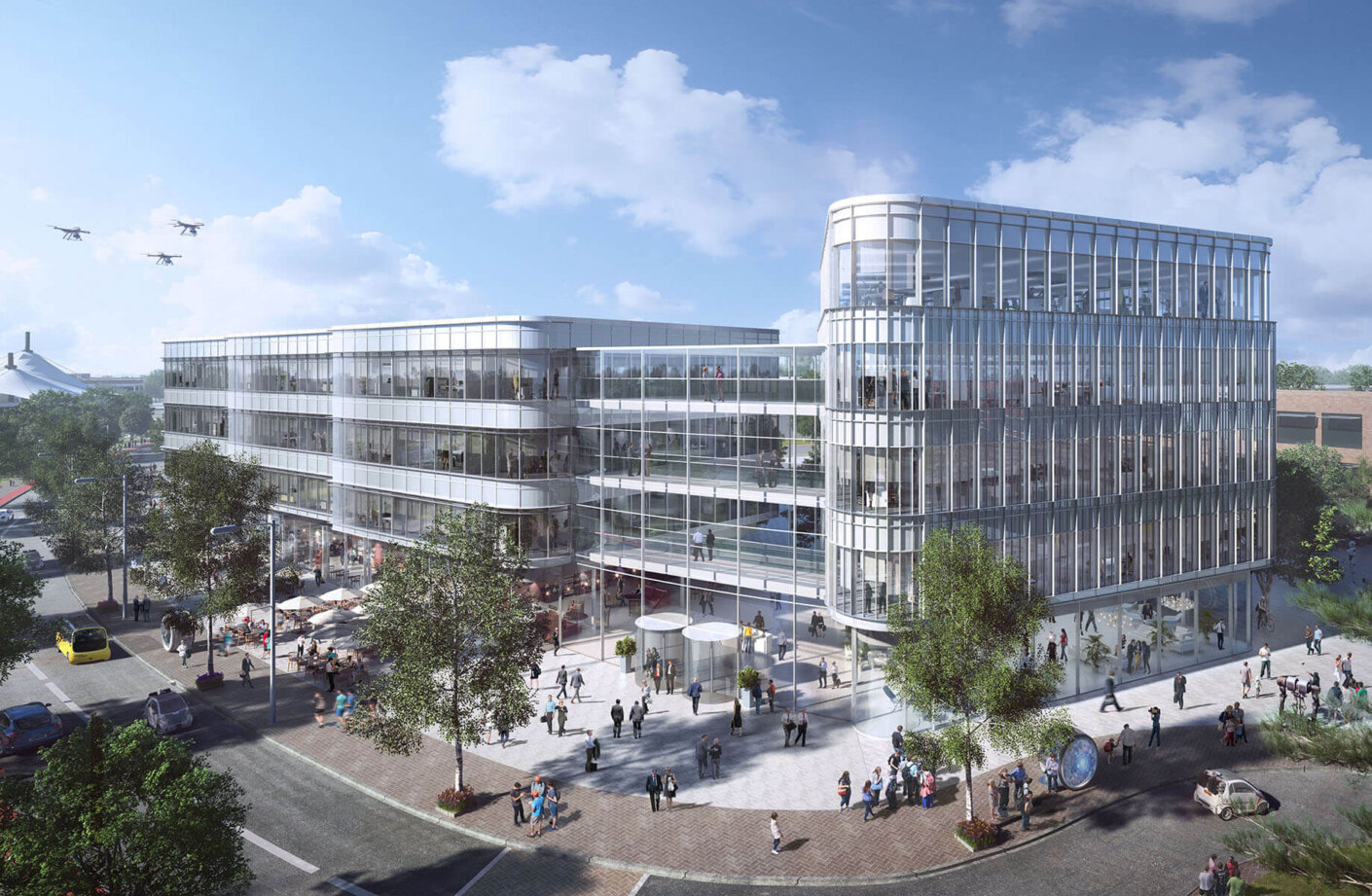
Providing for the employees of Milton Park means providing for people who live locally. The Vision 2040 plan will lead the way in providing running trails, sports facilities, and amenities from groceries to science discovery days out for school children and the whole community.
Choice and accessibility are deep-rooted in our design by setting ambitious goals for single occupancy vehicle reduction. A full range of choices will empower people to live healthier lifestyles. Alongside walking and cycling priorities, the Park also plans for future autonomous shuttle bus services. These ground-breaking ideas will not only benefit Milton Park but also the nearby town of Didcot and the surrounding villages.
